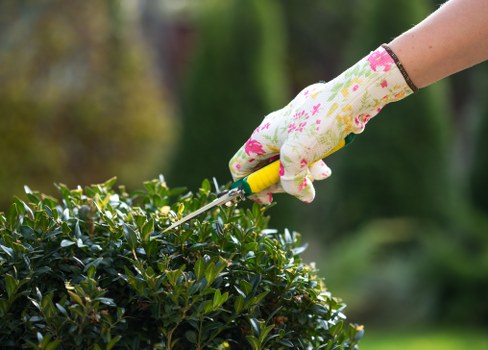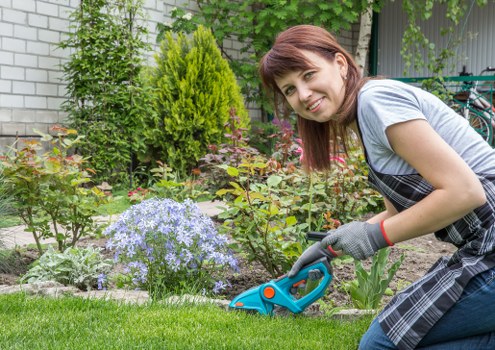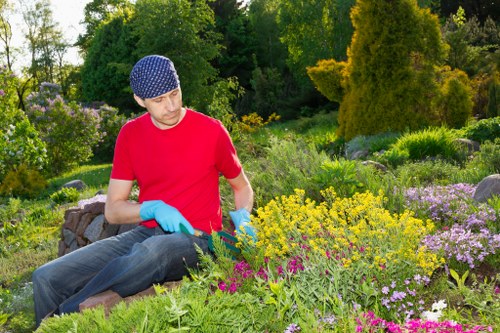Gardener Swiss Cottage: A Comprehensive Guide

Welcome to the enchanting world of Gardener Swiss Cottage, where traditional charm meets modern gardening expertise. Whether you're a seasoned gardener or just starting, this guide will provide you with everything you need to create and maintain a beautiful Swiss Cottage garden.
The Swiss Cottage style is renowned for its picturesque appeal, blending seamlessly with natural landscapes. Its unique design elements and plant selections make it a favorite among garden enthusiasts.
In this article, we'll explore the key features of a Swiss Cottage garden, tips for maintaining it, and the best plants to incorporate. Let's embark on this green journey together.

Understanding Swiss Cottage Gardens
A Swiss Cottage garden embodies a harmonious blend of formality and natural beauty. Originating from the quaint cottages of Switzerland, this style emphasizes lush, overflowing plantings and a relaxed atmosphere.
The design typically includes a variety of perennials, annuals, and shrubs arranged in a seemingly spontaneous yet carefully planned manner. This creates a sense of abundance and timelessness.
One of the hallmarks of the Swiss Cottage garden is its use of traditional materials, such as stone pathways and wooden structures, which add to the rustic charm.

Key Features of Swiss Cottage Gardens
- Lush Plantings: An abundance of flowers and greenery.
- Traditional Materials: Use of stone, wood, and other natural materials.
- Curved Paths: Meandering walkways that invite exploration.
- Seating Areas: Cozy spots for relaxation amidst nature.
- Water Features: Ponds or fountains that add tranquility.
These features work together to create a welcoming and serene environment, perfect for both relaxation and entertainment.
Incorporating these elements into your garden can transform it into a Swiss Cottage haven.

Choosing the Right Plants
Plant selection is crucial in achieving the lush, vibrant look of a Swiss Cottage garden. Here are some top choices to consider:
- Roses: Classic and versatile, roses add color and fragrance.
- Lavender: Offers a soothing scent and attracts pollinators.
- Foxgloves: Tall, elegant flowers that add vertical interest.
- Hostas: Perfect for shaded areas, providing rich foliage.
- Delphiniums: Stunning spikes of blue or purple flowers.
These plants not only enhance the aesthetic appeal but also ensure a variety of textures and colors throughout the seasons.
It's important to consider the local climate and soil conditions when selecting plants to ensure they thrive.

Maintaining Your Swiss Cottage Garden
Proper maintenance is key to keeping your Swiss Cottage garden vibrant and healthy. Here are some essential tips:
- Regular Watering: Ensure plants receive adequate moisture.
- Pruning: Trim and shape plants to promote growth and remove dead foliage.
- Weeding: Keep the garden tidy by removing unwanted plants.
- Mulching: Helps retain soil moisture and suppress weeds.
- Fertilizing: Provide necessary nutrients to support plant health.
By following these maintenance practices, your garden will remain a beautiful and thriving Swiss Cottage retreat.
Consistency in care ensures that all elements of the garden work together harmoniously.
Local Relevance: Swiss Cottage Neighborhoods
The Swiss Cottage area is surrounded by several charming neighborhoods, each offering unique features for gardeners:
- Harlesden: Just north of Swiss Cottage, Harlesden boasts vibrant markets and community gardens.
- West Hampstead: Known for its leafy streets and spacious parks, perfect for gardening enthusiasts.
- Finchley Road: Offers a mix of residential and commercial spaces with beautiful green spaces.
- Kensal Green: Home to the stunning Kensal Green Cemetery and lush gardens.
- St John's Wood: Features the famous Regent's Park and elegant garden settings.
- North Kensington: Rich in multicultural influences with diverse plant selections.
- Maida Vale: Known for its canal-side gardens and serene environments.
- Brondesbury: Offers community-driven gardening projects and local nurseries.
- Cricklewood: Provides spacious backyards and family-friendly gardens.
- Queen's Park: Features expansive parks and well-maintained flower beds.
- Kilburn: Known for its vibrant community gardens and local plant shops.
- Primrose Hill: Offers panoramic views and beautifully landscaped gardens.
- Hampstead: Renowned for its historic gardens and botanical diversity.
- Westminster: Features royal gardens and meticulously maintained green spaces.
- Camden Town: Known for its eclectic gardens and innovative planting schemes.
Each of these areas provides unique opportunities and resources for gardeners, from community initiatives to specialized plant nurseries.
Enhancing Your Swiss Cottage Garden
To elevate your Swiss Cottage garden, consider integrating the following elements:
- Seasonal Blooms: Plant flowers that bloom in different seasons to ensure year-round color.
- Herb Garden: Incorporate herbs like basil, thyme, and rosemary for both culinary and ornamental purposes.
- Wildlife Attractors: Install birdhouses and butterfly-friendly plants to invite wildlife.
- Garden Art: Add sculptures or decorative pieces to personalize your space.
- Lighting: Use garden lights to highlight pathways and focal points during the evening.
These enhancements can add depth and interest to your garden, making it a delightful retreat.
Personal touches reflect your style and make the garden uniquely yours.
Common Challenges and Solutions
Every garden faces its own set of challenges. Here are some common issues in Swiss Cottage gardens and how to address them:
- Pests: Use natural repellents and encourage beneficial insects.
- Disease: Ensure proper spacing and avoid overwatering to prevent fungal issues.
- Weeds: Regular maintenance and mulching can keep weeds at bay.
- Soil Quality: Test soil and amend it with compost to improve fertility.
- Climate Extremes: Select resilient plants and provide adequate shelter from harsh weather.
Addressing these challenges proactively ensures a healthy and thriving garden.
Adaptability and knowledge are key to overcoming gardening obstacles.
Tools and Resources for Swiss Cottage Gardeners
Having the right tools and resources makes gardening more enjoyable and efficient. Here are essentials for Swiss Cottage gardeners:
- Quality Tools: Invest in durable tools like pruners, spades, and watering cans.
- Gardening Guides: Reference books and online resources for plant care and design ideas.
- Local Nurseries: Access to a variety of plants and expert advice.
- Garden Clubs: Join communities for support, knowledge sharing, and social activities.
- Workshops and Classes: Enhance your skills through hands-on learning.
Utilizing these resources can significantly enhance your gardening experience.
Continuous learning and community engagement foster a thriving garden environment.
Conclusion
The Swiss Cottage garden style offers a timeless and versatile approach to gardening. With its emphasis on lush plantings, traditional materials, and a harmonious layout, it provides a perfect retreat for nature lovers.
By understanding the key features, selecting the right plants, and maintaining your garden diligently, you can create a beautiful and inviting Swiss Cottage garden.
Embrace the charm and tranquility that comes with this garden style, and watch your outdoor space flourish.
Frequently Asked Questions
1. What defines a Swiss Cottage garden?
A Swiss Cottage garden is characterized by its lush, overflowing plantings, traditional materials, and a relaxed, naturalistic layout. It often includes a mix of flowers, shrubs, and perennials arranged in a seemingly spontaneous yet thoughtfully planned manner.
2. What are the best plants for a Swiss Cottage garden?
Some of the best plants include roses, lavender, foxgloves, hostas, and delphiniums. These plants provide a variety of colors, textures, and fragrances that enhance the garden's aesthetic appeal.
3. How do I maintain a Swiss Cottage garden?
Regular watering, pruning, weeding, mulching, and fertilizing are essential. Consistent maintenance ensures that the garden remains healthy and vibrant throughout the year.
4. Can I create a Swiss Cottage garden in a small space?
Yes, the Swiss Cottage style can be adapted to smaller spaces by focusing on vertical planting, using containers, and selecting compact plant varieties to maintain the lush, abundant look.
5. What tools do I need for a Swiss Cottage garden?
Essential tools include quality pruners, spades, watering cans, gardening gloves, and a wheelbarrow. Additionally, resources like gardening guides and access to local nurseries can be very helpful.